
AMP | Kids is proud to partner with The Mini Page, celebrating over 50 years of providing engaging and fun learning opportunities to young readers across the country. This feature was originally syndicated in newspapers the week of May 30 – June 5, 2020. It is distributed digitally here with permission from Andrews McMeel Syndication. Enjoy and share with the young learners in your life!
What’s your favorite summer food? Now is the time to enjoy juicy fruits, fresh vegetables, and all-American traditions.
Let’s learn more about some of our summertime standards.
Ice cream
One of the first frozen desserts was made nearly 2,000 years ago. Runners brought snow from the mountains to Roman Emperor Nero. He flavored it with honey 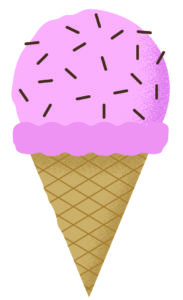 and juices.
and juices.
In the late 1200s, the Italian explorer Marco Polo brought a sherbet recipe home from Asia. (Sherbet is made with ice and milk.)
In the 1700s, ice cream was popular in America as well. Presidents George Washington, Thomas Jefferson and James Madison were big fans.
When rivers froze in the winter, people often collected the river ice. They then stored it in sawdust in special ice houses to make ice cream in warmer weather. But few could afford it.
In the 1900s, electricity and refrigeration made ice cream a treat for everyone.
Apple pie
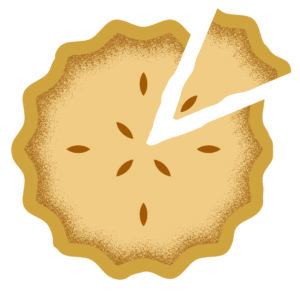 Apple pie is so popular in the United States that we say, “As American as apple pie.”
Apple pie is so popular in the United States that we say, “As American as apple pie.”
Apple pie was probably invented in England. When the Pilgrims came to America, they brought apple seeds and recipes with them.
In the late 1700s, a preacher, John Chapman, began traveling through the Ohio and Indiana frontier, planting apple trees. For about 50 years, he taught settlers how to grow the trees. People began calling him Johnny Appleseed.
Hot dogs
Americans eat about 20 billion hot dogs every year!
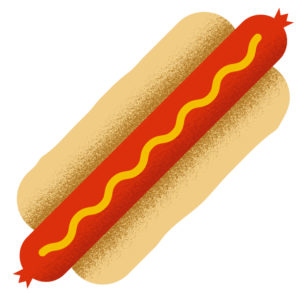 No one really knows who invented the hot dog. Experts believe that German immigrants brought sausage-making recipes to America in the late 1800s.
No one really knows who invented the hot dog. Experts believe that German immigrants brought sausage-making recipes to America in the late 1800s.
Some German immigrants also brought over their long dachshund dogs. A sausage served in a bun was called a “dachshund sausage” or “little-dog sausage.” College students started calling them “hot dogs.”
Watermelon
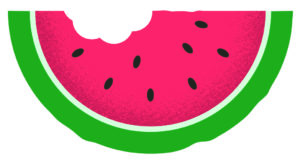 Watermelon was first grown in Africa thousands of years ago. In some African areas during dry spells, watermelons were the only source of water.
Watermelon was first grown in Africa thousands of years ago. In some African areas during dry spells, watermelons were the only source of water.
European colonists brought watermelons to America.
Fresh tomatoes
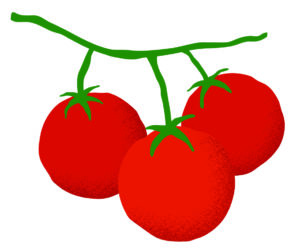 Tomatoes ripened outdoors in the sun are a special summer treat.
Tomatoes ripened outdoors in the sun are a special summer treat.
Tomatoes have been grown in South and Central America for centuries. Spanish explorers brought tomatoes from Mexico to Europe in the 1500s. However, many Europeans thought they were poisonous and refused to eat them.
The legend is that in 1820, a man who liked tomatoes, Col. Robert Johnson, ate tomatoes in front of a crowd in Salem, New Jersey. Everyone thought he would die before their eyes. When he didn’t, people began to believe tomatoes were safe to eat.
Corn on the cob
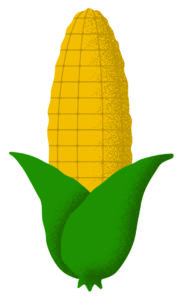 Corn on the cob is from a variety called “sweet corn,” and is best eaten before the corn kernels are fully grown.
Corn on the cob is from a variety called “sweet corn,” and is best eaten before the corn kernels are fully grown.
Only about 10 percent of the country’s corn crop is eaten by people. About half the corn is used to feed livestock. The rest is used to make products including syrup, fuel, oil, paint, medicine, cloth, starch, and paper.
Native Americans living in the area of Mexico were eating corn, or maize, 10,000 years ago. By the time Europeans arrived, people throughout the American continents were eating corn.
Resources:
On the Web:
Kids Health: MyPlate Food Guide
At the Library:
Mr. Goo Goes Food Tripping: Famous Food and Delicacies in North America by Baby Professor
Teachers:
For standards-based activities to accompany this feature, visit Andrews McMeel Syndication. And follow The Mini Page on Facebook!
